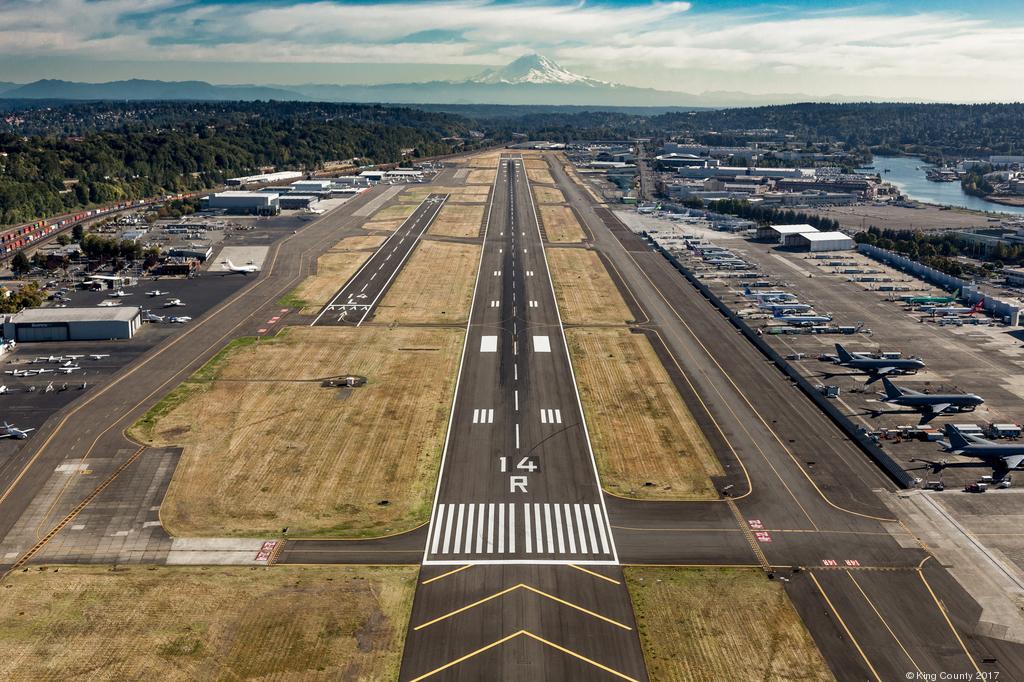Listen to this article 3 min
Private airline services companies have poured hundreds of millions of dollars into the development of King County International Airport — Boeing Field in the past several years. Now the airport is launching its own planning effort to meet the forecast for rising airport demand.
While airspace above Seattle is at a premium, the airport could play a key role in taking the pressure off Seattle-Tacoma International Airport.
“With the existing infrastructure, the airport has the capacity to handle significantly larger operations, so there is some opportunity to help relieve the regional congestion,” Boeing Field Director John Parrott said.
That’s unlikely to be mainline carrier service, but the airport could be uniquely suited to take some “overflow” cargo flights and other traffic during peak periods, Parrott said. Boeing Field is in the process of selecting a consultant to conduct its Vision 2045 plan, an effort meant to guide infrastructure development.
Meanwhile, the state last month shifted away from a search for a new commercial airport site in Western Washington in favor of expanding existing airport infrastructure to meet the projected demand. A bill signed by Gov. Jay Inslee replaced the Commercial Aviation Commission charged with finding a site to establish a new airport with a new group aimed at finding a broader range of solutions for air travel demand.
With more than 220 million pounds of air cargo conveyed a year, Boeing Field was named the fourth-largest cargo-focused U.S. hub in 2021 by the Chaddick Institute. As the principal test airport for the Boeing Co.’s 777X, the airport has the capacity to handle the largest freight jets in service.
“That role will continue to be very vital going forward. It’s the closest airport to downtown Seattle, to major business hubs,” said Josh Brown, executive director of the Puget Sound Regional Council (PSRC).
A report compiled by the PSRC prior to the pandemic estimated that demand for air cargo would more than double to 1.32 million tons by 2050, though it will likely be limited much sooner by warehousing and access infrastructure.
Two decades ago, Boeing Field had more than twice as many takeoffs and landings as it does today, “so clearly the airport has the capacity to handle a significantly larger number of operations,” Parrott said. That could help alleviate Sea-Tac traffic during peak demand periods, he added.
“You don’t design an airport to be able to comfortably handle the very peak demand on the peak day of the year, because then you have a lot of excess capacity,” Parrott said.
But during peak periods, even two or three planes can create a bottleneck that “ripples down for several hours afterward.”
“If there’s an opportunity for us at Boeing Field, with close proximity to Sea-Tac and adequate facilities to handle any size aircraft, to relieve a little bit of pressure, that could help the entire regional system — and therefore the national system — run smoother,” he said.

